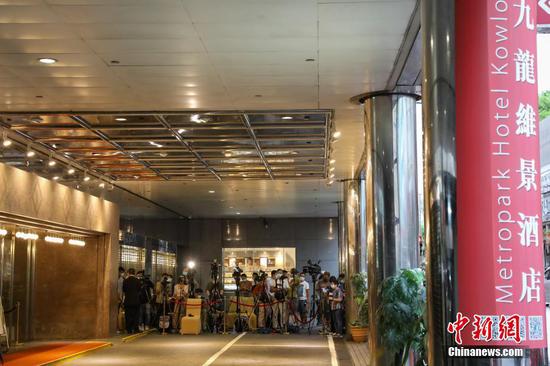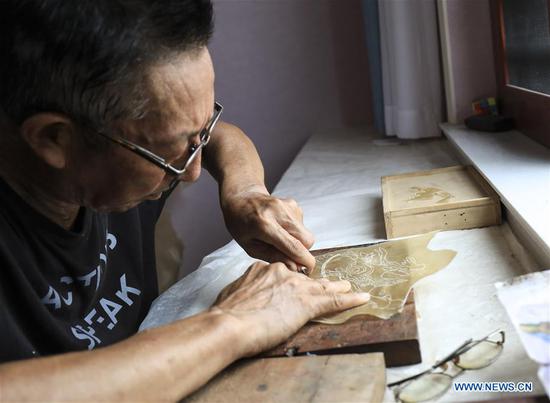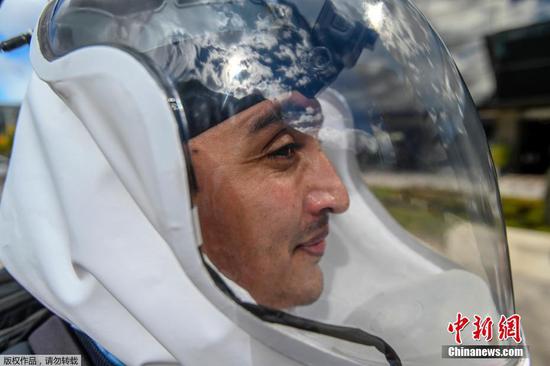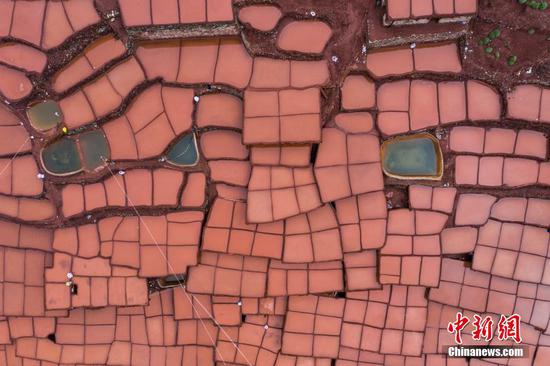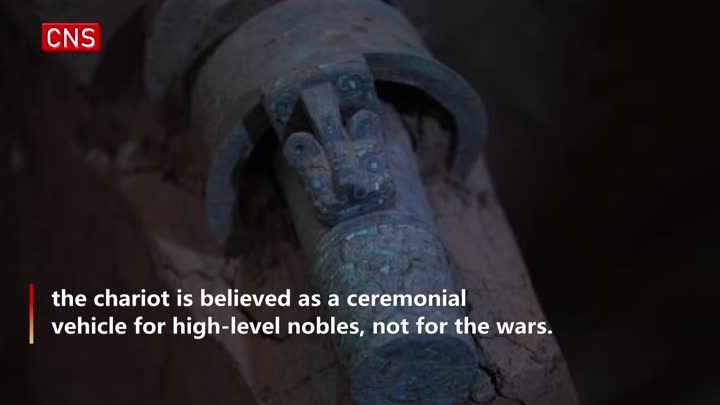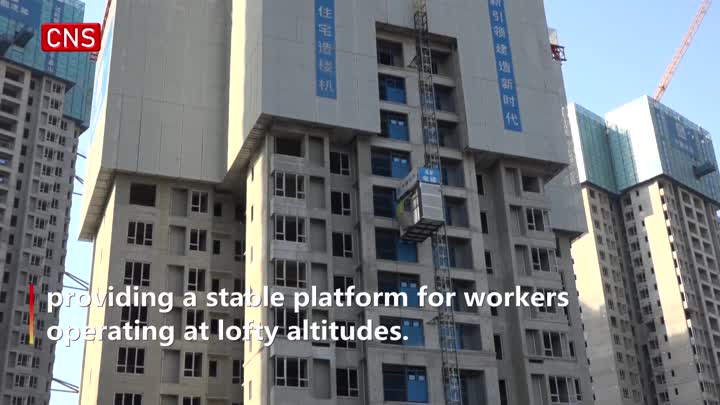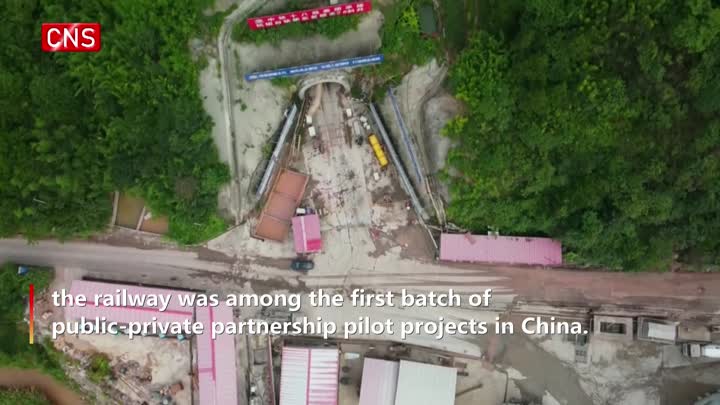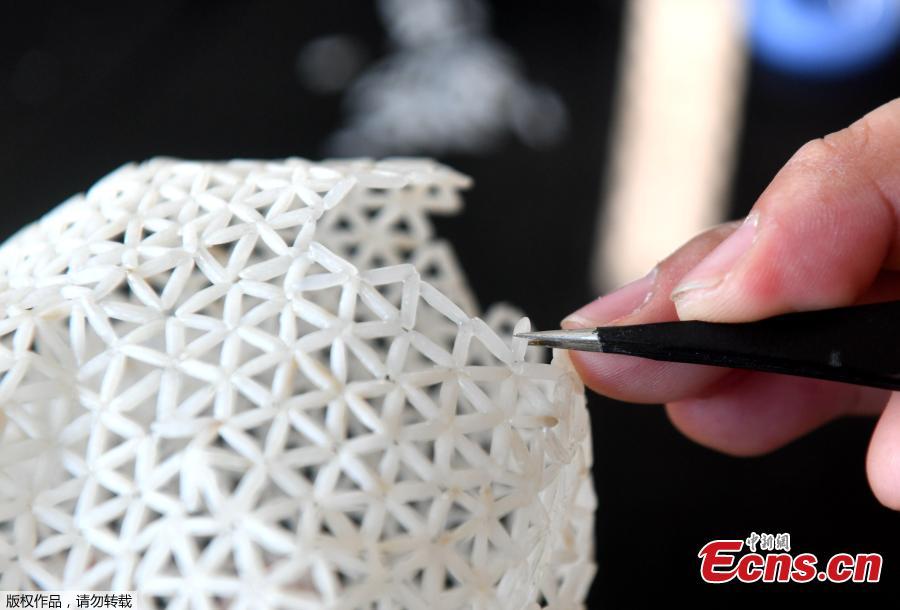
Chen Guorui uses small rice grains to create his artworks in Fuzhou city, East China's Fujian province. Called gaoloumixian, or high buildings made with rice grains, the art form dates back to the end of the Qing Dynasty(1644-1911), and was in a period of great prosperity during the Minguo period (1912-49). The artworks were used to worship ancestors and pray for good harvests. (Photo: China News Service/ Lu Ming)
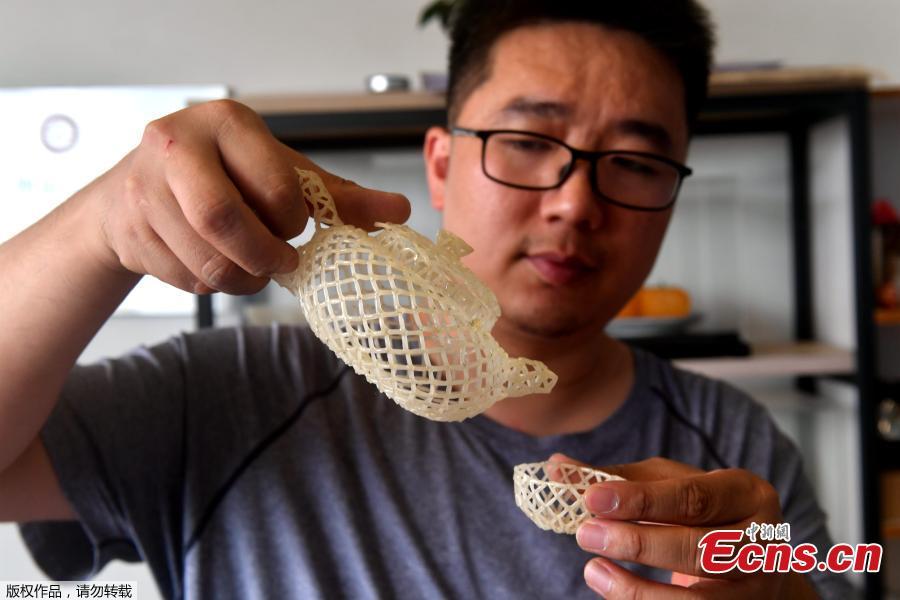
One of the works made by Chen Guorui uses small rice grains in Fuzhou city, East China's Fujian province. Called gaoloumixian, or high buildings made with rice grains, the art form dates back to the end of the Qing Dynasty(1644-1911), and was in a period of great prosperity during the Minguo period (1912-49). The artworks were used to worship ancestors and pray for good harvests. (Photo: China News Service/ Lu Ming)
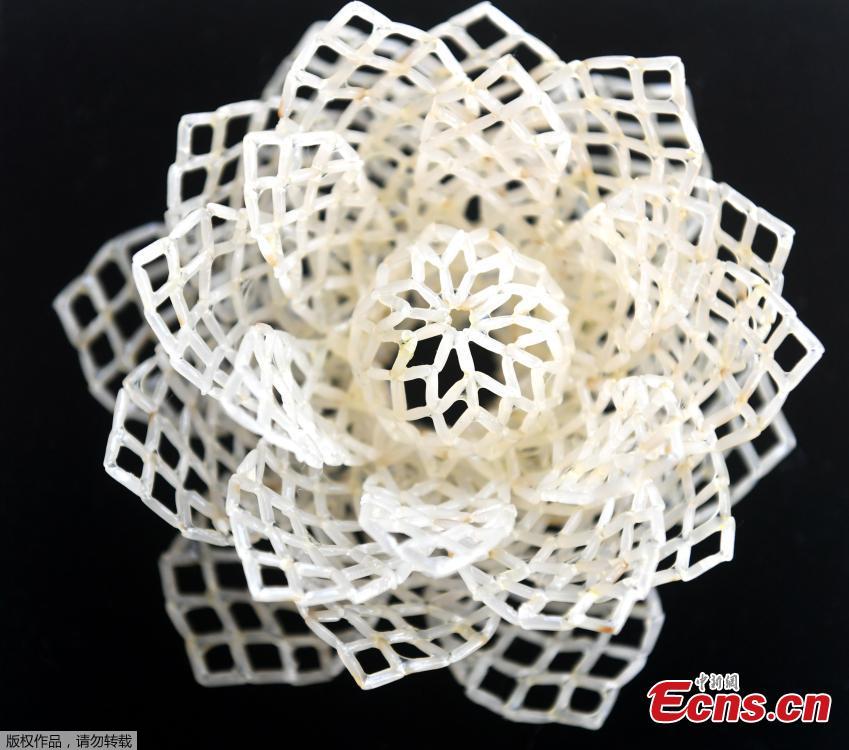
One of the works made by Chen Guorui uses small rice grains in Fuzhou city, East China's Fujian province. Called gaoloumixian, or high buildings made with rice grains, the art form dates back to the end of the Qing Dynasty(1644-1911), and was in a period of great prosperity during the Minguo period (1912-49). The artworks were used to worship ancestors and pray for good harvests. (Photo: China News Service/ Lu Ming)
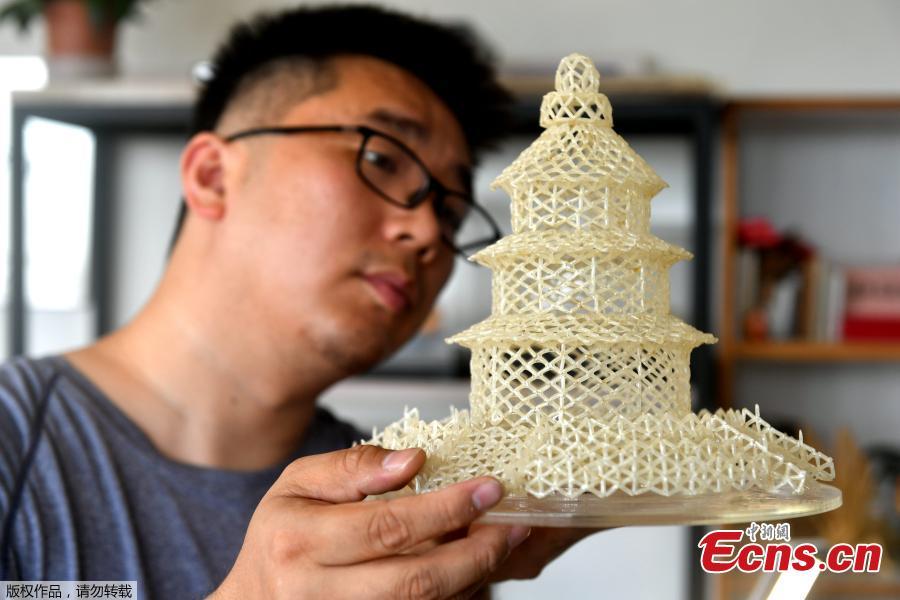
One of the works made by Chen Guorui uses small rice grains in Fuzhou city, East China's Fujian province. Called gaoloumixian, or high buildings made with rice grains, the art form dates back to the end of the Qing Dynasty(1644-1911), and was in a period of great prosperity during the Minguo period (1912-49). The artworks were used to worship ancestors and pray for good harvests. (Photo: China News Service/ Lu Ming)











